|
|
|
 |
 |
 |
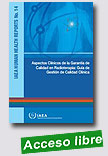 |
Aspectos Clínicos de la Garantía de Calidad en Radioterapia: Guía de Gestión de Calidad Clínica
IAEA Human Health Reports, 2015, 38 p.
Los fines fundamentales de la presente guía de gestión son: proporcionar al médico oncólogo radioterápico o radioncólogo y a los demás actores un instrumento de gestión que les facilite ejercer con calidad y seguridad las etapas del proceso de radioterapia que son de su competencia en la atención del paciente con cáncer; profundizar en el sistema integral de calidad en Oncología Radioterápica.
|
Extraído de: http://www-pub.iaea.org/MTCD/Publications/PDF/Pub1711s_web.pdf
|
 |
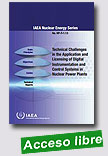 |
Technical Challenges in the Application and Licensing of Digital Instrumentation and Control Systems in Nuclear Power Plants
IAEA Nuclear Energy Series, 2015, 65 p.
With the modernization of existing analogue instrumentation and control (I&C) systems in nuclear power plants through digital I&C technology, and the implementation of digital I&C systems in new plants, the industry is faced with significant challenges. These challenges appear in the form of difficulties in managing the necessarily incremental transition, highly . |
integrated (and interdependent) architectures, the flexible configurability enabled by digital technology, and uncertainty and inconsistency in licensing digital I&C systems and equipment in the different Member States. This publication discusses 17 major issues utilities developers, suppliers and regulatory stakeholders, so that the industry can capture and benefit from shared experience, recent technological developments, and emerging best practices
Extraído de: http://www-pub.iaea.org/books/IAEABooks/8764/Technical-Challenges-in-the-Application-and-Licensing-of-Digital-Instrumentation-and-Control-Systems-in-Nuclear-Power-Plants
|
 |
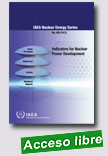 |
Indicators for Nuclear Power Development
IAEA Nuclear Energy Series, 2015, 93 p.
The indicators presented in this publication are intended to shed light on a range of issues that are important for nuclear power development. A number of countries are considering introducing nuclear power and some of them are close to beginning the construction of their first nuclear power plant (NPP) in the coming years or decades while a number of other countries are expanding existing programmes. The aim of the publication is therefore to present a fairly comprehensive list of
|
indicators. These indicators serve as a tool to identify issues that are relevant for investing in nuclear power as well as to identify areas where such investment could yield benefits.
Extraído de: http://www-pub.iaea.org/MTCD/Publications/PDF/Pub1712_web.pdf
|
 |
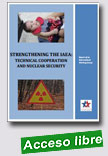 |
The Partnership for a Secure America assembled a broadly based International Working Group to examine in depth the IAEA’s current funding structure and sources, and explore ways that non-state donors can better assist the IAEA in developing additional contributions for its nuclear security and technical cooperation programmes.
|
The Group was composed of individuals from seventeen countries representing all geographic regions of the world and each functional grouping of the IAEA. It included former senior officials from the IAEA Secretariat, former Governors or Ambassadors who represented their countries at the IAEA, and other experts with IAEA experience.
The International Working Group agreed on ten recommendations which it believes would help put the IAEA in a better place to attract, receive and utilize non-traditional contributions to its technical cooperation and nuclear security programmes. They suggested that the Agency should: 1.Develop a Comprehensive Non-State Funding Strategy; 2.Strong Commitment of the Director General and Senior Management; 3.Improve Communications and Outreach Strategy: Build a Brand; 4.Engage with Non-State Donors: Create Public-Private Partnerships; 5.Address Transparency Concerns: Establish Metrics; 6.Modernize the Agency’s Engagement with the Private Sector; 7.Work More Closely with Other IGOs; 8.Identify Priorities Shared with Donors and Recipient Countries; 9.Solicit Support from Civil Society and NGOs; 10.Follow the Example of the PACT.
Extraído de: http://www.psaonline.org/2016/07/19/strengthening-iaea/ |
 |
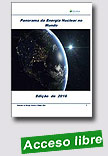 |
Panorama da Energia Nuclear no Mundo - Edição de 2016
Eletrobrás Eletronuclear, 2016, 207 p.
O crescimento econômico, a prosperidade e o aumento da população levarão inevitavelmente ao aumento do consumo de energia nas próximas décadas. O mundo muda a cada dia com os desenvolvimentos da economia, as alterações climáticas e a energia trazendo novos desafios e novas oportunidades. A indústria nuclear não é diferente e também não é imune ao impacto destes desenvolvimentos.
A urgência de enfrentar a pobreza global e reduzir as |
emissões de gases do efeito estufa exige que consideremos a energia nuclear com todas as suas possibilidades. Os fatos básicos da tecnologia - bons e maus - devem ser confrontados.
Expandir a oferta de energia elétrica e simultaneamente reduzir os efeitos das mudanças climáticas é o desafio que se apresenta aos formuladores de políticas energéticas. A substituição de 137 reatores nucleares em término de vida útil, nos próximos 20 anos, quer por outros nucleares, quer por outras fontes energéticas, é uma questão que exigirá investimentos muito expressivos de todos os países envolvidos.
Os fatores geopolíticos que envolvem o suprimento de energia também não podem ser descartados e em muitos casos a energia nuclear é a única opção para garantir maior segurança nacional de suprimento e diminuição da exposição em relação à volatilidade do preço do petróleo e à importação de combustíveis.
Em dezembro de 2015, o acordo de Paris consolidou anos de negociações com um acordo entre 188 países para limitar as emissões de dióxido de carbono. Muitos países estão impulsionando ativamente o crescimento de seus planos de produção de energia nuclear para fazer frente aos compromissos que assumiram quanto às mudanças climáticas.
Apesar do grande número de países emergentes em energia nuclear, eles não devem contribuir muito para a expansão da capacidade nuclear no futuro previsível - o principal crescimento virá em países onde a tecnologia já está bem estabelecida, principalmente na Ásia. No entanto, a longo prazo, a tendência de urbanização em países menos desenvolvidos vai aumentar muito a demanda por eletricidade, especialmente, a fornecida por centrais geração de energia de base, como nuclear.
A disponibilidade de novas tecnologias e o progresso realizado para desenvolver sites que sejam publicamente aceitáveis, leva à construção de novas instalações nucleares. A energia nuclear tem vantagens ambientais distintas sobre os combustíveis fósseis, podendo conter e gerenciar virtualmente todos os seus resíduos sem causar qualquer tipo de poluição não controlável.
Cabe lembrar que ao longo de décadas de uso pacífico da energia nuclear, jamais houve desvio de urânio para uso militar. A energia nuclear civil não tem sido a causa ou a rota para armas nucleares em qualquer país que tenha arsenal nuclear.
Extraído de: http://www.eletronuclear.gov.br/LinkClick.aspx?fileticket=
SG_9CnL80wM%3d&tabid=406 |
 |
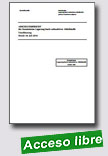
|
Verantwortung für die Zukunft - Ein faires und transparentes Verfahren für die Auswahl eines nationalen Endlagerstandortes (in German, Responsabilidade para o Futuro - um processo justo e transparente para a seleção de um local de repositório nacional)
Kommission - Lagerung hoch radioaktiver Abfallstoffe (Commission on Storage of High-Level Radioactive Waste Materials - Germany), July 2016, 684 p.
The procedure for choosing a deep geologic repository site in Germany could start as soon as 2017, but the facility itself |
might not be operational until the next century, a commission of scientists, industry leaders and civil society representatives has said.
In a 682-page report, the Commission on Storage of High-Level Radioactive Waste Materials says it had originally hoped to see a decision on the final site of a repository for the disposal of high-level radioactive waste from Germany’s nuclear plants by 2031, with the facility itself scheduled to open in 2050.
But even that timetable was described by commission president Michael Müller as "ambitious". The final report says the facility might only enter service “in the next century”.
The report says the procedure for choosing the repository site should start only after both chambers of parliament have amended current legislation in line with the commission’s recommendations. The commission calls for this to happen “as soon as possible” and suggests 2017 as a possible date for starting the selection process.
The commission said safety and sustainability have been its guiding principles in the work it has done. It said the search for a site is not solely a technical task, but should consider the “social and cultural magnitude” of the challenge. The report says the site selection process which should be science-based and open to extensive public participation with bodies at regional, inter-regional and national level.
However, the report says the commission still believes a “conflict” between the various social stakeholders taking part in site selection could overshadow the process and the reports includes recommendations for conflict mitigation.
Extraído de: http://www.nucnet.org/all-the-news/2016/07/07/repository-site-procedure-could-start-next-year-but-operation-could-be-next-century-says-repor
|
 |
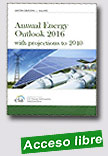 |
Annual Energy Outlook 2016
Energy Information Administration (EIA - US), July 2016, s. p.
Projections in the Annual Energy Outlook 2016 (AEO2016) focus on the factors expected to shape U.S. energy markets through 2040. The projections provide a basis for examination and discussion of energy market trends and serve as a starting point for analysis of potential changes in U.S. energy policies, rules, and regulations, as well as the potential role of advanced technologies. |
Extraído de: http://www.eia.gov/forecasts/aeo/index.cfm
|
 |
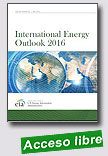 |
International Energy Outlook 2016
Energy Information Administration (EIA - US), May 2016, 290 p.
Energy Information Administration (EIA - US), May 2016, 290 p.
The outlook for energy use worldwide presented in the International Energy Outlook 2016 (IEO2016) continues to show rising levels of demand over the next three decades, led by strong increases in countries outside of the Organization for Economic Cooperation and Development (OECD), particularly in Asia. Non-OECD Asia, including China and India, account |
for more than half of the world’s total increase in energy consumption over the 2012 to 2040 projection period. By 2040, energy use in non-OECD Asia exceeds that of the entire OECD by 40 quadrillion British thermal units (Btu) in the IEO2016 Reference case.
In the IEO2016 Reference case, total world energy consumption rises from 549 quadrillion Btu in 2012 to 815 quadrillion Btu in 2040, an increase of 48%. Most of the world’s energy growth will occur in the non-OECD nations, where relatively strong, longterm economic growth drives increasing demand for energy. Non-OECD energy consumption increases by 71% between 2012 and 2040 compared with an increase of 18% in OECD nations. Energy use in the combined non-OECD region first exceeded that of the OECD in 2007 and by 2012, non-OECD countries accounted for 57% of total world energy consumption. By 2040, almost two-thirds of the world’s primary energy will be consumed in the non-OECD economies.
Economic growth—as measured in gross domestic product (GDP)—is a key determinant in the growth of energy demand. The world’s GDP (expressed in purchasing power parity terms) rises by 3.3%/year from 2012 to 2040. The fastest rates of growth are projected for the emerging, non-OECD countries, where combined GDP increases by 4.2%/year. In OECD countries, GDP grows at a much slower rate of 2.0%/year over the projection as a result of their more mature economies and slow or declining population growth trends. The strong projected economic growth rates in the non-OECD drive the fast-paced growth in future energy consumption among those nations.
Extraído de: http://www.eia.gov/forecasts/ieo/pdf/0484(2016).pdf
|
 |
|
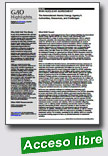
|
Iran Nuclear Agreement: The International Atomic Energy Agency's Authorities, Resources, and Challenges
Government Accountability Office (GAO-US), June 9, 2016, 50 p.
In July 2015, multilateral talks with Iran culminated in an agreement called the JCPOA, through which Iran committed to limits on its nuclear program in exchange for relief from sanctions put in place by the United States and other nations. IAEA, an independent international organization that administers safeguards designed to detect and deter the
|
diversion of nuclear material for nonpeaceful purposes, was requested to verify and monitor Iran’s implementation of these commitments. The U.S. Department of State coordinates the United States’ financial and policy relationship with IAEA.
GAO was asked to review the authorities and resources IAEA has to carry out its activities regarding the JCPOA. This report, which updates the preliminary findings from an interim report released in February 2016 (GAO-16-417), examines (1) the JCPOA commitments that IAEA has been asked to verify and monitor and its authorities to do so, (2) the resources IAEA has identified as necessary to verify and monitor those JCPOA commitments, and (3) potential challenges and mitigating actions IAEA and others have identified with regard to verifying and monitoring the JCPOA.
GAO analyzed the JCPOA and key IAEA documents and interviewed current and former IAEA officials, U.S. government officials, national laboratory representatives, and experts from research institutions.
Report
Extraído de: http://www.gao.gov/assets/680/677785.pdf?utm_medium=
email&utm_source=govdelivery
|
 |
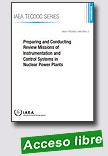 |
Preparing and Conducting Review Missions of Instrumentation and Control Systems in Nuclear Power Plants
IAEA TECDOC, 2016, 102 p.
The Independent Engineering Review of Instrumentation and Control Systems (IERICS) mission is a comprehensive engineering review service directly addressing strategy and the key elements for implementation of modern I&C systems, noting in applicable cases specific concerns related to the implementation of digital I&C systems and the use of software |
and/or digital logic in safety applications of a NPP.
The IERICS mission is conducted by a team of international experts with direct experience applicable to the areas of review. Judgements of compliance are made on the basis of IAEA publications (mainly IAEA Safety Guide SSG–39 [1], but also the other references of this publication [2-15]), and of the combined expertise of the international review team.
The key objectives of the IERICS mission are to: Assess the design approach, principles and procedures of the system under review; Identify existing or potential design, operational and licensing related issues or concerns of the system under review; Propose measures to address issues identified; Identify any outstanding good practice that could be a benefit to other organizations; Facilitate exchange of experience.
Extraído de: http://www-pub.iaea.org/books/IAEABooks/11071/Preparing-and-Conducting-Review-Missions-of-Instrumentation-and-Control-
Systems-in-Nuclear-Power-Plants
|
 |
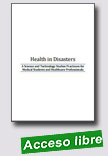 |
Health in Disasters - A Science and Technology Studies Practicum for Medical Students and Healthcare Professionals
IAEA, 2016, 127 p.
This Science and Technology Studies (STS) handbook has been produced as the result of several technical meetings at IAEA in Vienna, Austria, that gathered international experts and Japanese medical doctors who have been involved at the frontline of the Fukushima nuclear power plant accident to
|
respond to medical emergencies. Through a series of intense discussions with these concerned Japanese physicians and scientists, and in consultation with a panel of experts in social sciences, the participants of the meeting reached the conclusion that only a multidisciplinary STS approach could help in addressing a complex situation such as the Fukushima Daiichi accident.
Extraído de: https://humanhealth.iaea.org/HHW/Latest/Health_
in_Disasters/Handbook_Health_in_Disasters.pdf
|
 |
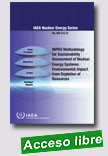 |
INPRO Methodology for Sustainability Assessment of Nuclear Energy Systems: Environmental Impact from Depletion of Resources
IAEA Nuclear Energy Series, 2015, 62 p.
INPRO is an international project to help ensure that nuclear energy is available to contribute in a sustainable manner to meeting the energy needs of the 21st century. A basic principle of INPRO in the area of environmental impact from depletion of resources is that a nuclear energy system will be capable of contributing to the energy needs in the 21st century while
|
making efficient use of non-renewable resources needed for construction, operation and decommissioning. Recognizing that a national nuclear energy programme in a given country may be based both on indigenous resources and resources purchased from abroad, this publication provides background materials and summarizes the results of international global resource availability studies that could contribute to the corresponding national assessments.
Extraído de: http://www-pub.iaea.org/books/IAEABooks/10748/INPRO-Methodology-for-Sustainability-Assessment-of-Nuclear-Energy-Systems-Environmental-I
|
 |
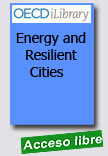 |
Energy and Resilient Cities
OECD, 01 July 2016, 96 p.
This paper analyses the role of cities in energy policies to build resilience and assesses related energy policy practices in cities. It analyses how energy affects resilience in cities from the economic, environmental, social and institutional perspectives. It also assesses the policy practices of six cities; Barcelona (Spain), Bristol (UK), Kyoto (Japan), Munich (Germany), Perpignan (France) and Toronto (Canada). This paper outlines the building blocks of key policy strategies;
|
adaptive energy management, robust energy management, redundant energy management, flexible energy management, inclusive energy management, resourceful energy management and integrated energy management. It proposes a number of policy measures in the building blocks for managing energy smartly in cities to build resilience.
Report
Extraído de: http://www.oecd-ilibrary.org/urban-rural-and-regional-development/energy-and-resilient-cities_5jlwj0rl3745-en
|
 |
| |
|
|
|
|
|
|
|
